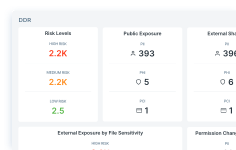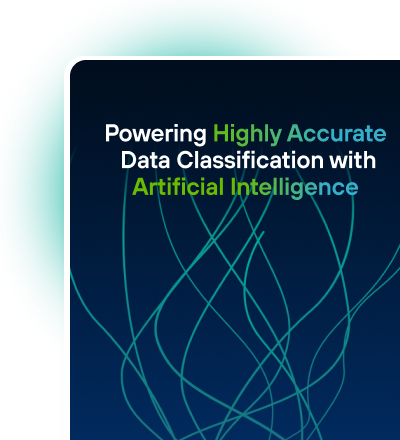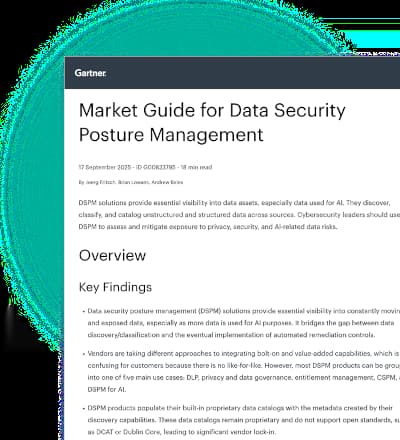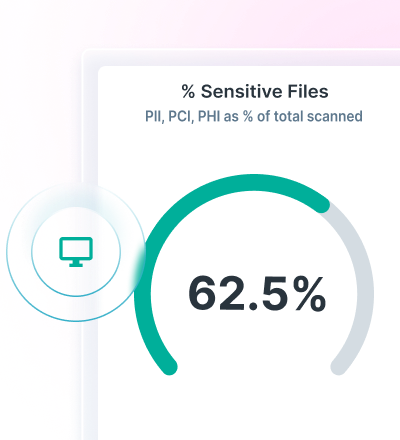Navigate Data Privacy Compliance with Forcepoint DLP
0 min read

Tim Herr
For a typical employee at your organization, data privacy compliance might be as simple as remembering a few things not to do with sensitive data. But for your security admins, compliance isn’t a strictly negative matter – it imposes positive obligations like deleting old data at the end of its designated retention period or preparing reports for regulatory filings and audits.
How confident are you that your organization is doing all that is required to maintain compliance? Is it going to be difficult for you to handle updated regulations or to expand into untapped markets?
Forcepoint Data Loss Prevention (DLP) offers numerous features to take the pain out of data privacy compliance. Read on for examples of how our solution, deployed on-premises or in the cloud, sets you up for regulatory success.
Find policy templates enabling compliance
Configuring policies for your DLP solution with an eye to ensuring regulatory compliance can be challenging if you’re doing it manually – and this is an area where you shouldn’t risk overlooking a critical rule. Fortunately, Forcepoint DLP comes with over 1,700 classifiers and policy templates, enabling out-of-the-box compliance for over 80 countries.
When creating DLP policies, you will first navigate to the desired policy level and choose between a flat and structured hierarchy. At this point you can always build your policy from scratch by entering in your own rules manually, but Forcepoint DLP also provides you the option to select an industry or country. You can then pick a policy template for something like GDPR or HIPAA and see the rules automatically propagate, saving admins time and eliminating risk of an oversight.
Customize policies to meet organizational mandates
Once you’ve named this DLP policy, you can start adding classifiers, which are the conditions that will trigger the policy. Policies for Personally Identifiable Information (PII) can cover many different classifiers, such as name, Social Security number, credit card number, DNA profile, or anything else that could be identifiable. This is where your organization’s particular business needs should inform what classifiers you use and what actions you have them trigger. Forcepoint DLP offers many advanced capabilities for customizing your policy, such as:
- Creating new classifiers out of key phrases or regular expressions
- Selecting classifiers from the included industry-related dictionaries
- Integrating with any file labeling software already used by your organization
If you use Forcepoint Data Security Posture Management (DSPM) and Data Detection & Response (DDR), these policy actions can even be applied more sensitively and dynamically, with risk levels assigned to users and adjusted automatically to correspond with analysis of user behavior. Complementing Forcepoint DLP with DSPM and DDR provides visibility and control over data-at-rest, data-in-use and data-in-motion, allowing you to secure sensitive data throughout its lifecycle.
Analyze and report incidents
You can conveniently extend DLP coverage to all channels through the adoption of tools such as a Cloud Access Security Broker (CASB) and Secure Web Gateway (SWG). This functionality is most effectively exercised through Forcepoint Data Security Cloud, which offers a unified platform for data security across all channels. When incidents do occur, Forcepoint DLP offers single-pane-of-glass visibility to understand the flow of data and the context in which incidents occur. If desired, admins can select users, devices or destinations to actively monitor if a potential breach is suspected.
The ease of reporting is also crucial for maintaining compliance, as data privacy regulations may specify a time frame within which notification of data breaches must take place. The remediation and response capabilities baked into Forcepoint DLP can help organizations to quickly take advantage of information about the scope and source of incidents and avoid the risk of non-compliance.
Solutions to ease the burden of regulatory compliance
Global data privacy regulations pose challenges to organizations, especially as their increasing number and complexity call for more or better resources for managing compliance. But Forcepoint DLP, particularly in combination with DSPM and DDR, offers comprehensive protection with many of the rough compliance corners sanded down. The power to rapidly select, deploy and extend DLP policies that will reliably uphold your compliance needs makes this solution a powerful tool to prevent data loss that also respects the precious time of your security team.
Do you want to experience firsthand the ease of setting up policies in Forcepoint DLP to satisfy your data privacy compliance needs? Talk to an expert today to schedule a demo.

Tim Herr
Read more articles by Tim HerrTim serves as Brand Marketing Copywriter, executing the company's content strategy across a variety of formats and helping to communicate the benefits of Forcepoint solutions in clear, accessible language.
- The Practical Guide to Mastering Data Compliance
In the Article
 The Practical Guide to Mastering Data ComplianceRead the eBook
The Practical Guide to Mastering Data ComplianceRead the eBook
X-Labs
Get insight, analysis & news straight to your inbox

To the Point
Cybersecurity
A Podcast covering latest trends and topics in the world of cybersecurity
Listen Now









